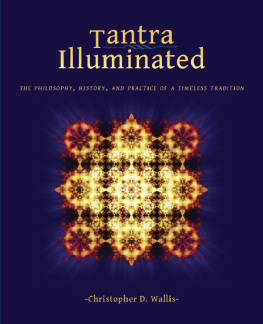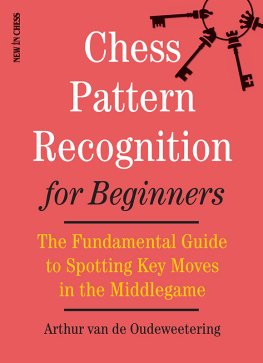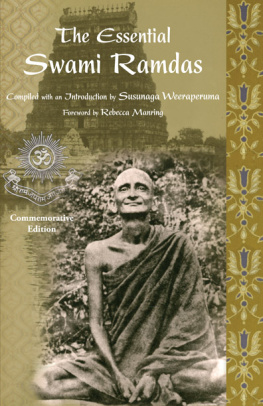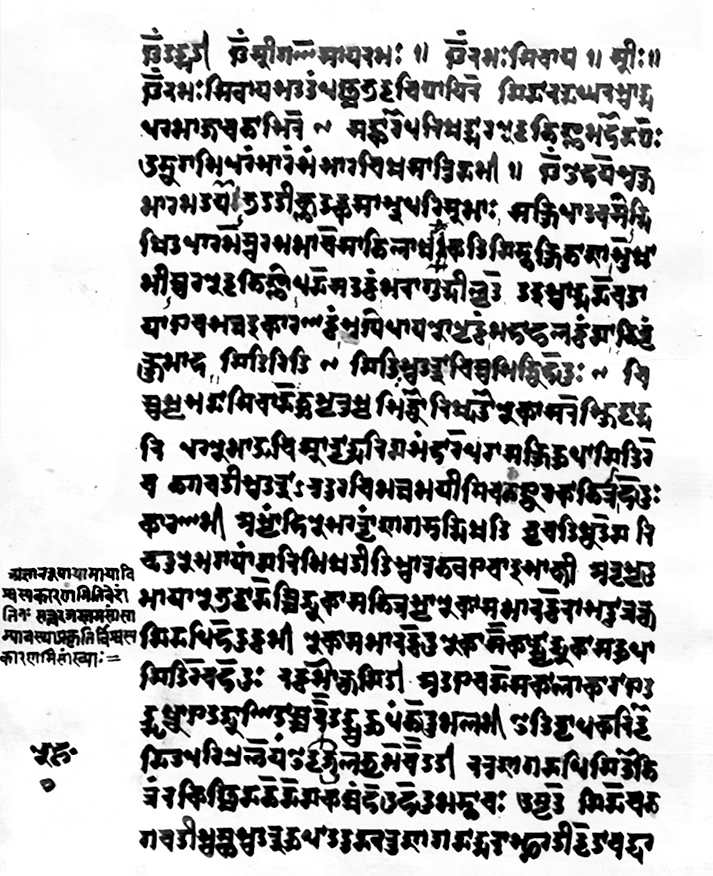First page of a rad manuscript of the Pratyabhij-hdaya
Preface
(especially for scholars and academics)
This is something new. At least, I havent seen anything quite like it. Its new insofar as it joins together two kinds of writing that have, until now, remained mostly distinct: () an academically rigorous, philologically informed, complete, and thorough English translation of a Sanskrit text, and () an explicit and unashamed work of constructive theology that encounters that same text as a living document capable of instigating spiritual awakening, spiritual epiphanies, and even radical transformation of ones experience of reality. As a scholar-practitioner, I hold that the potential of # is in part predicated upon the rigor and fidelity of #: a surprisingly uncommon claim.
By constructive theology I do not at all mean imaginative theology, for I attempt to stay as true to the original authors vision as I can. I mean rather that this book attempts to make a meaningful contribution to the spiritual dimension of human life. It does not merely report what was taught by a professional tntrika in the Valley of Kashmr , years ago (though it does do that); it also attempts to show how what Kemarja wrote constitutes a cutting-edge contribution to spiritual discourse in the first quarter of the twenty-first centurybut only when we unpack his meaning in terms of concepts, metaphors, and analogies that are current in our present culture. So this book walks a precarious tightrope: to what extent is it possible to be faithful to Kemarjas intended meaning, insofar as it can be discerned, while engaging in discourse that is compelling for twenty-first-century readers of English? Since I feel a kind of devotion and loyalty ( bhakti ) to the original author and his lineage, I have done my best to convey accurately the insights that crystallized in his awakened awareness and that he transcribed in the Sanskrit language; however, whenever the intent of his language was not completely clear, I have interpreted it in the manner that seemed to me most likely to be spiritually relevant and impactful today. Fortunately for us, his command of Sanskrit was such that his meaning usually is clear, allowing for that degree of ambiguity that invites deeper contemplation in a way that pedantry cannot.
The book is therefore divided into two distinct registers: the literal translation of Kemarjas words and my explanation of what he means. Having studied with the best in the field, I feel fairly confident in the former, and history shall judge the validity and usefulness of the latter. The translation appears in two forms: on its own and interleaved with explanation.
Those who seek an intellectual justification for both writing and reading this kind of book need look no further than Jeffrey Kripals cogent definition of hermeneutical mysticism:
Hermeneutical mysticism [is] a disciplined practice of reading, writing, and interpreting through which intellectuals actually come to experience the religious dimensions of the texts they study, dimensions that somehow crystallize or linguistically embody the forms of consciousness of their original authors. In effect, a kind of initiatory transmission sometimes occurs between the subject and object of study
It is my hope that both scholars and practitioners who read this book feel at least an inkling of that initiatory transmission from the great sage Rjnaka Kemarja and his lineage.
How to Read This Book
Unlike Tantra Illuminated, this book is not a reference work; it is a journey, with a beginning, middle, and end. I would say that it is best read cover to cover if you already have some background in Tantrik philosophy. However, I want to alert you to the fact that some chapters are much more relevant to the culture of India , years ago, while other chapters have content that is more universal. Inconveniently, some of the former come closer to the beginning, such as Chapters Three and Eight, while some of the most powerful and universal content occurs in chapters toward the end. It would be such a pity if you got bogged down in the first ten chapters and missed the gems in the second half. So, as with Tantra Illuminated , I encourage you to simply skip ahead when you feel stuck. You will want to read this book a second time anyway, I assure you.
The designer, Jeff Werner, and I have striven to present the text in such a way that it is always clear when you are reading a translation of Kemarja and when you are reading my explanation. In each of the twenty chapters, as well as the prologue and epilogue, you first encounter Kemarjas text without explanation or embellishment. It will necessarily be somewhat opaque on the first reading, yet suggestive and intriguing. Then you move on to my detailed explanation, within which the original text repeats in full. This style of writingcarefully explaining each sentence of a primary source in orderis called exegesis , and it was once commonplace in both Europe and India but is now a virtually lost art in both. To do it well one must be trained in philology (the art and science of the interpretation of texts written in classical languages), which years ago in Europe was considered the most important of the academic disciplines. Today the word, let alone the disciplined and careful way of thinking it denotes, is largely unknown to the general public. (Under the name vy karaa , it was also considered the foundation of all clear thinking in classical India.) Suffice to say that the very act of reading this book will teach you about the art of exegesis, so long as you read critically. Reading critically simply means actively engaging with the ideas presented, rather than passively taking them in in the way one does with most television: wrestling with them, subjecting them to inquiry, and investigating their truth-value experimentally and experientially.











